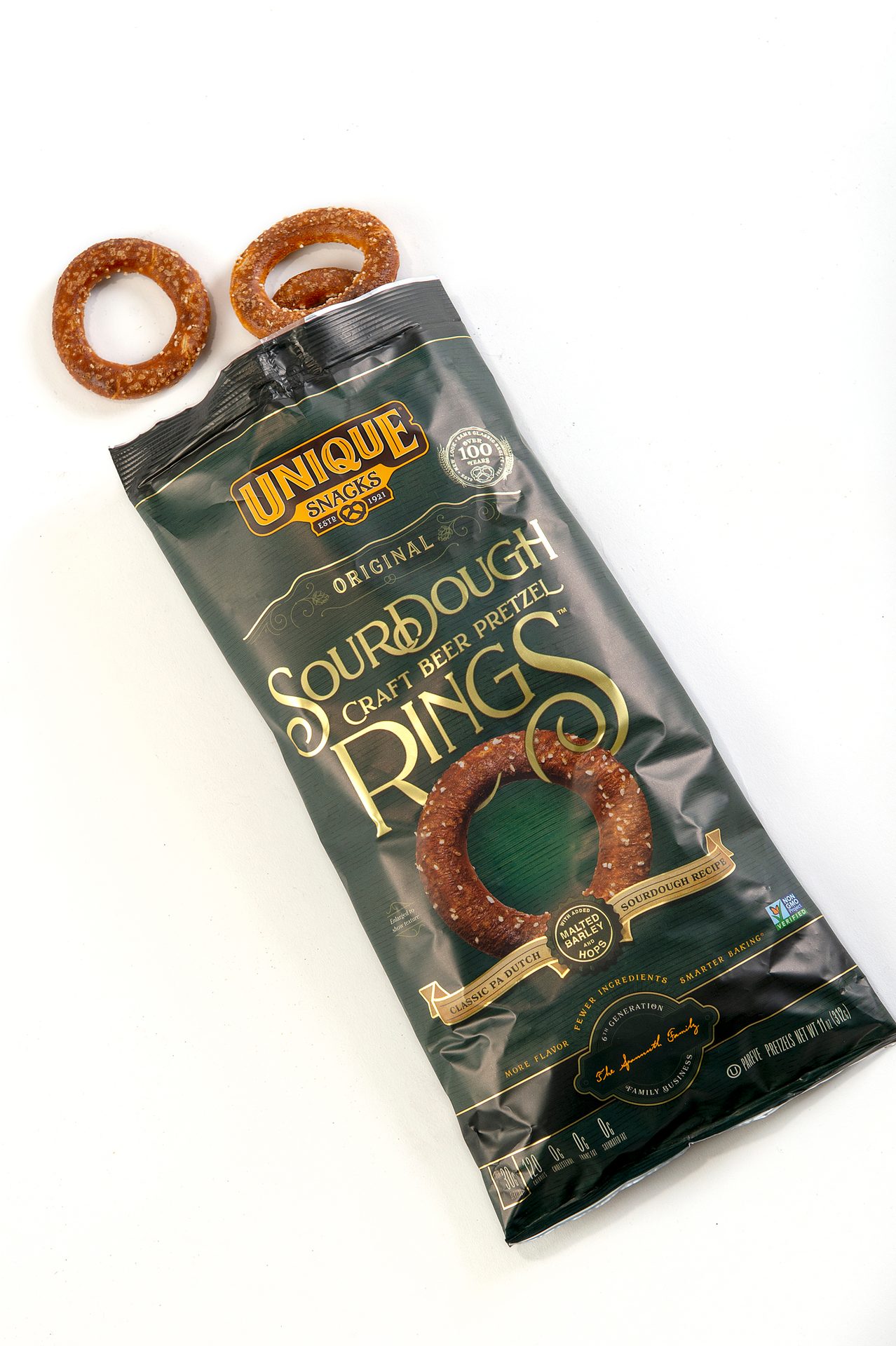E-commerce
packaging
The BOTTOM LINE
- Conveyors, scanners, and sorting equipment are key
- Packaging must reflect what is displayed online
- Many touchpoints are involved in the supply chain
More consumers are ordering groceries online, creating challenges for manufacturers that package and ship food. Consumers expect food items to arrive fresh and undamaged. Also, the packaging must reflect what is displayed online and extend food shelf life while reducing waste. Developments in e-commerce involve packaging and logistics as well as product protection, sustainability, and branding. While capabilities are advancing, challenges abound.
E-commerce delivers
Innovations in packaging, logistics fuel growth.
Neal Lorenzi, Contributing Writer
PMMI’s 2018 report, “E-Commerce: Think Inside the Box,” reported a steady increase in demand for direct-to-consumer delivery of goods. “Since then, the pandemic has increased consumer demand for the delivery of goods, increasing the strain on smaller companies that fulfill their own e-commerce orders and retailers who must quickly adapt to the changing landscape,” says Jorge Izquierdo, vice president, market development, PMMI, Reston, VA. Additional challenges such as limited workforce availability and supply chain issues have heightened the need for solutions in this area.
Smaller companies are facing another problem brought on by the pandemic: the struggle to keep up with increased demand on production. “Investment, in many cases, is prioritized in this area, as opposed to expansion of e-commerce fulfillment capabilities,” Izquierdo continues. “And although larger companies are discussing the feasibility of exploring direct-to-consumer channels, they have yet to make the jump.”

Courtesy of FlexiBake
On the equipment side, companies that are serious about (and have the capital to invest in) automating e-commerce fulfillment for food products are looking mostly at conveyors, scanners and sorting equipment, labeling, and warehouse management software, Izquierdo adds. “Investments in the next two years will likely stay within these equipment types but also should include cartoning, palletizing, and picking.”
What types of food packaging is a match for e-commerce? “Any packaging that effectively brands your product while keeping material and shipping costs in check,” says Wayne Ortner, general manager of FlexiBake Ltd., Vancouver. “Shortages and supply chain obstacles have reduced margins for retailers and ecommerce sales, so it is important to have accurate product costing reports.”
Market trends
Center-store grocery continues to drive the bulk of e-commerce orders, according to Anne-Marie Roerink, president, 210Analytics.com, San Antonio. “However, fresh departments are still increasing their share of basket. Impulse items, such as snacks, are one area that continues to lag.” Roerink no longer sees an increase in the number of online shoppers, but does see strength in order frequency among those who are dedicated online shoppers. “However, only 3% to 4% of consumers shop solely online, whereas the majority uses a hybrid system of buying some items in-store and some items online.”
A new trend sees grocery retailers leveraging e-commerce to extend their product selection through virtual shelves and extending their territories by picking orders out of smaller warehouses in areas where they do not have physical stores. A good example is Kroger, Roerink adds. “Retailers also are teaming up with third-party delivery companies to ship their deli-prepared goods. Packaging for these foods is important because of requirements such as spill-proofing and keeping food warm, as well as consumer interest in sustainable packaging.”
Trends for snacks in the direct-to-consumer space include small quantity multi-packs of center-store goods. These typically consist of two to three units per box instead of the usual 12-unit case that is sold wholesale, according to Justin Spannuth, chief operating officer, Unique Snacks, Reading, PA. His company offers a variety of packaging options ranging from small grocery packs, snack bag size offerings, variety packs, and gifting options through its website.

Courtesy of Unique Snacks
“Typically, consumers don’t prefer more than one to two units at any time when making a standard purchase of these items, so it comes down to balancing the consumer’s desire and the practicality of shipping costs divided over a per-unit price,” Spannuth notes, “Shipment of larger quantities of single-serve packages will slowly become more prominent in e-commerce.”
Products with long shelf life and high turns are finding the most benefit via e-commerce and snacks fit this category well, Spannuth continues. “Fresh and frozen will be the last categories to find value in e-commerce due to the complexity of shipping through distribution centers on short turn timeframes, as well as the cost of cold-chain shipping for individual packages. This is where grocery stores that are shifting to online order pickups and delivery will start to gain traction as micro-fulfillment centers.”
Touchpoints
As food products move through the e-commerce supply chain, many touchpoints are involved—packaging, handling, repacking, moving through distribution centers—which means the food must be properly packaged to avoid damage, according to Chris Deck, CEO and founder of Deck Commerce, St. Louis.
“Before 2020, curbside pickup was predominately used for takeout food at restaurants,” Deck says. “However, when the pandemic struck, it became the lifeblood of many brands—offering convenience to shoppers and solving capacity challenges for retailers as e-commerce orders skyrocketed. Now, retailers in all sectors have started offering curbside pickup in order to remain competitive.” Curbside pickup and other forms of e-commerce are forecast to sustain double-digit growth rates through 2024, he adds.

Courtesy of Deck Commerce
Retailers need to be aware of some challenges when implementing e-commerce options. To fill that need, Deck Commerce provides an order management system (OMS) for direct-to-consumer retailers. The system automates many manual processes—up to 98% of customer orders, including processes for receiving, routing, fulfilling, tracking, notifying, and handling returns, according to Deck. “From the time a customer browses the online store across sales channels until he receives the order, OMS guides the entire process.”
A recent study conducted by Grand View Research shows that the global market for meal kit delivery services is $20.5 billion in 2022 and could grow by 17.4% each year through 2028, according to Derek Curtis, vice president sales at Körber Supply Chain, Minneapolis. “Consumers are changing their preference for receiving groceries and shifting their expectations in terms of the variety of groceries that are available; the industry is experiencing a heightened desire for SKU expansion.”
Körber offers Retail Execution software, which provides e-commerce solutions. “What used to be GPS tracking has morphed into different areas, such as Geo-fence tracking, triggering alerts and workflows that can alert a customer that his delivery is five minutes away,” Curtis says. “The goal is to decrease the amount of time it takes to deliver more products on time. That’s where we attract clients in the bakery and snack industry—by developing tools to help them manage freshness and get their products to their customers.”
Shipping refrigerated food is a big challenge to successfully implementing e-commerce initiatives. “The ability for food manufacturers to monitor the condition of their shipments in real time is important,” says Amy Childress, vice president of marketing and sales, cargo solutions for Emerson’s Cold Chain Business, Emerson, St. Louis. “Bakery and snack producers want to know when their shipments will arrive and if they were kept at the correct temperature throughout the route in order to meet food quality and safety standards.”
To meet that need, Emerson offers the Oversight portal, which allows plant managers to monitor a live map overlay of trucks en route to distribution centers. Shipment diversion is one of many solutions. For example, if a refrigeration issue arises on a truck during mid-shipment, food producers can divert the shipment to a local retailer or cold storage facility in order to preserve food quality and avoid loss.
Looking ahead
In the near future, what e-commerce trends do experts forecast? Ortner expects to see increased demand for more information printed on packaging, including supply chain details. “Consumers want to know what is in the food they eat, how it was produced, and where the ingredients came from.”

Courtesy of Emerson
“X-ray also plays a critical role in food safety and should always be used as a complementary technology to metal detection.”
— Eric Garr, regional sales manager, Fortress Technology

Roerink expects to see more branding on e-commerce food packaging. “After all, it’s a blank canvas that goes directly to consumers. We see this trend in restaurant food service and it’s likely to migrate into grocery food service.” Roerink also sees a focus on box and package optimization to reduce the amount of void space and a continued push for more sustainable materials. SF&WB

